
Strong Foundations and an amazing Covid-19 Response has made Australia a preferential location for highly productive investment opportunities.
The wealthier individuals are also the most mobile.
High net worth individuals (HNWI’s), who are people with assets and wealth over US$ 1,000,000.00 may decide to move around the globe for a number of reasons.
For the fourth year in a row, Australia beat out the U.S. as the top destination for migrating HNWI’s. More than 12000 HNWI’s arrived in Australia in 2018.
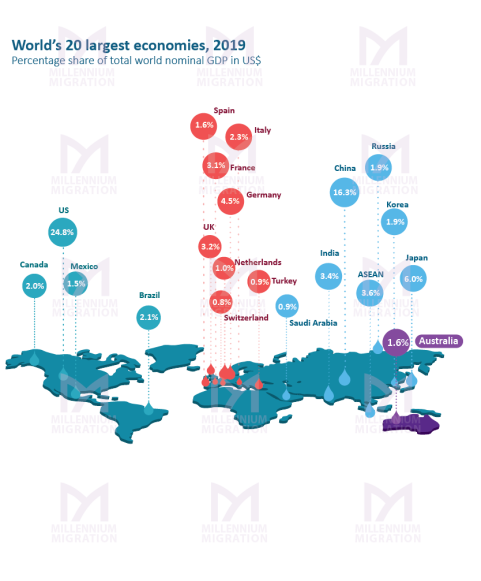
World’s 14th Largest Economy in 2019
Australia held its place as the world’s 14th largest economy in 2019, despite being home to just 0.3 per cent of the global population.
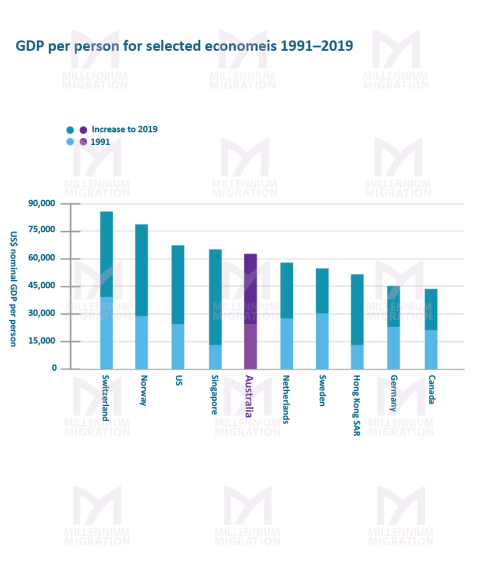
High Living Standards
Australian living standards have grown rapidly over the past two decades. In 1991, Australians had a lower GDP per head than France, Germany and the UK. After growing 189 per cent in almost three decades, Australia’s GDP has now overtaken France, Germany and the UK, as well as Canada and Sweden. In 2019, GDP per person reached a high, developed-world level of around US$54,000.
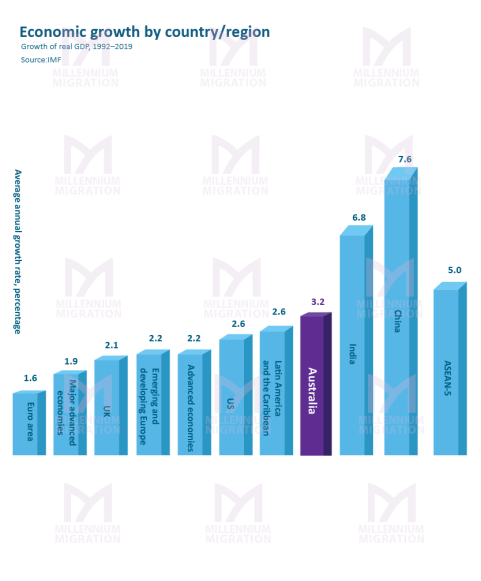
Australia Outpaces Advanced Economies
At 3.2 per cent per year, Australian GDP growth since 1992 has outmatched most comparable economic regions, including the Euro area, UK and the US. The Australian economy also outpaced G7 countries as a group, and the average growth rate of the world’s advanced economies.
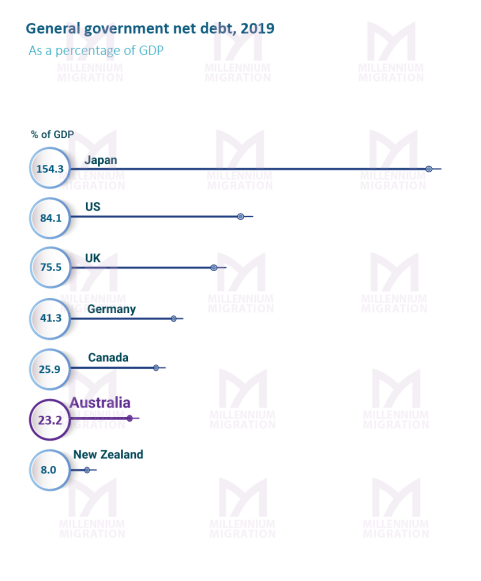
Low Government Debt
Fortunately, Australia entered 2020 with very low public debt, by international standards. In its April 2020 ‘Global Fiscal Monitor’ report, the International Monetary Fund reported that the Australian Government’s net debt was 23 percent of GDP in 2019. This is well below the 77 percent average for advanced economies. With low public sector debt, the Australian Government is well-positioned to support economic recovery.
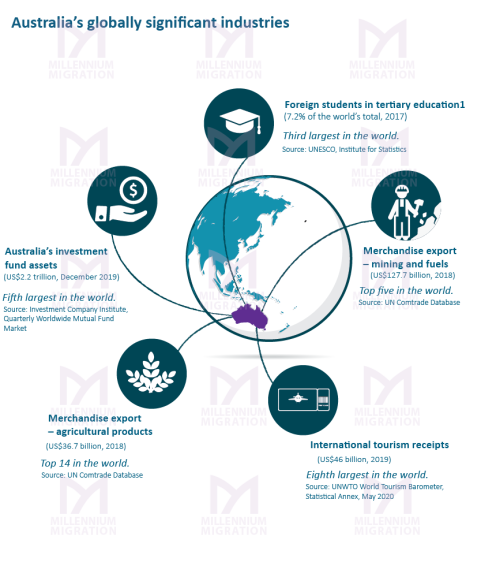
DYNAMIC INDUSTRIES
.
Australia’s Globally Significant Industries
Australia is a leading provider of goods and services that are in high demand across the global economy. The country is one of the world’s top five exporters of minerals and fuels, with significant reserves of iron ore, gold and liquefied natural gas (LNG). Australia is also one of the world’s top 14 agricultural producers and a leader in the production of premium and clean, green produce. Meanwhile, Australia has large and sophisticated financial markets, with the world’s fifth largest pool of investment fund assets.
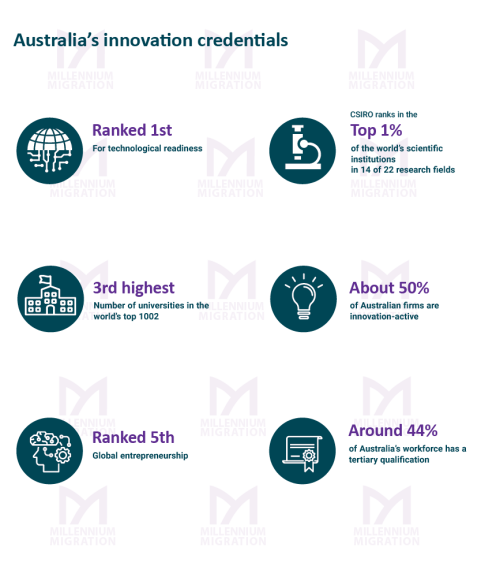
A LEADER IN NEW TECHNOLOGIES
Australia’s transition to a services-based economy is driving the development of new technologies in agriculture, education, financial services, health and other sectors. Innovation includes the use of blockchain in finance, immersive simulation technologies in education, robotics in medical procedures and the Internet of Things in agriculture.
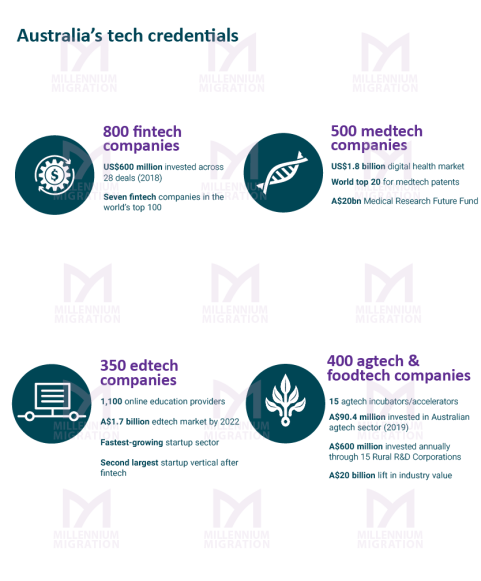
INNOVATION AND SKILLS
Australia’s transition to a services-based economy is driving the development of new technologies in agriculture, education, financial services, health and Australia is one of the most creative countries in the world. Overall spending on research and development (R&D) has grown by 7 per cent per year since 2001. Business is the driving force, with commercial R&D rising almost 2 percentage points faster than Australia’s GDP.
More than 28 per cent of our population was born overseas. Combined with the high skill levels of migrants, this multitalented workforce helps Australia thrive in today’s globalised economy.
Australia’s Roll Call of Innovation
Australia is a nation of inventors and entrepreneurs.
The electronic pacemaker (1926),the ‘black box’ flight recorder (1958),
ultrasound (1961),multi-channel cochlear implants (1970s),wi-fi (1990s),the polymer banknote (1988),Google Maps (2003) and acervical cancer vaccine (2006) are all Australian innovations.other sectors. Innovation includes the use of blockchain in finance, immersive simulation technologies in education, robotics in medical procedures and the Internet of Things in agriculture.
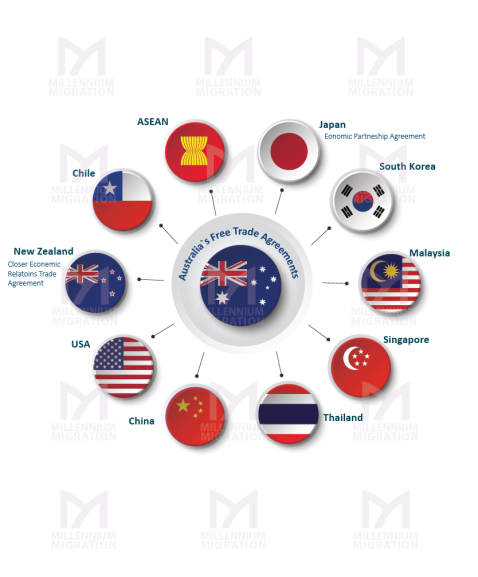
GLOBAL TIES
Australia is a trading nation, with exports and imports of goods and services making up 42 per cent of our gross domestic product in 2018–19. With 14 free trade agreements in place, approximately 70 per cent of Australian trade enjoys liberalised access to overseas markets.
Australia’s Free Trade Agreements
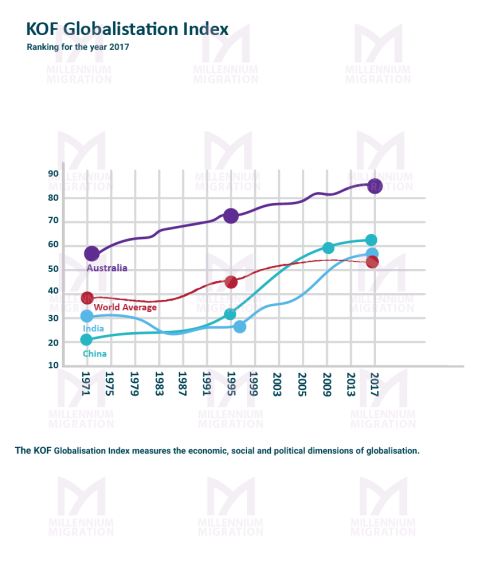
A highly globalised society and economy
When considering a wide range of economic, social and political factors, Australia is one of the most globalised countries in the world.
According to the KOF Globalisation Index, Australia ranked number two in the Asia-Pacific region in 2017, after Singapore. The top most globalised countries are Switzerland, Netherlands, Belgium, Sweden and the UK. Globally, Australia was ranked 25th, after the US (23rd) and well above many major trading economies, such as Korea (34th), Japan (36th), China (81st) and India (95th).
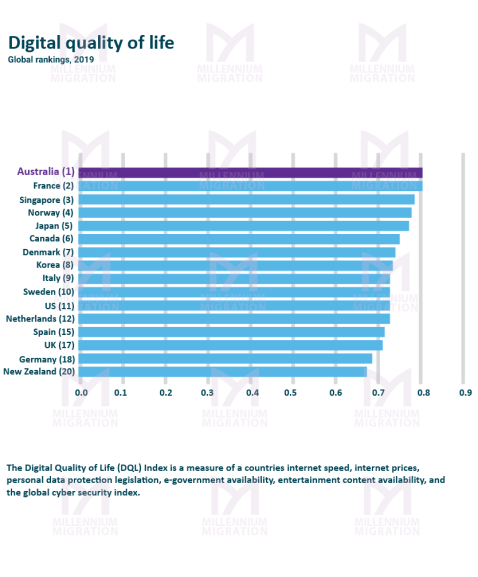
STRONG FOUNDATION
Australia Tops Rankings for digital quality life
Australia was ranked first out of 65 countries in Surfshark’s 2019 Digital Quality of Life rankings, followed by France and Singapore. The other top 10 countries include Norway, Japan, Canada, Denmark, Korea, Italy and Sweden. Factors contributing to the nation’s prime spot include: strong data protection laws; high content availability; an affordable mobile internet; a fast mobile internet speed; a well-developed e-government system; and a solid level of cyber security.

A highly globalised society and economy
According to Mercer’s 2020 Cost of Living Index, Australia’s lifestyle cities have become more internationally competitive, with a lower cost-of-living rating than most major cities in the Asia-Pacific region. Fortunately, Australia’s successful pandemic-containment measures have helped maintain the practical, lifestyle appeal of our state capitals.
